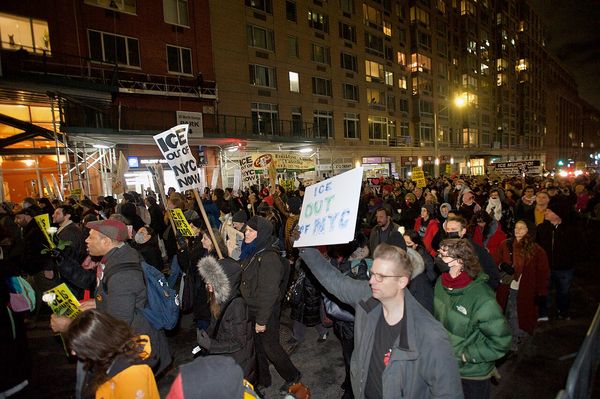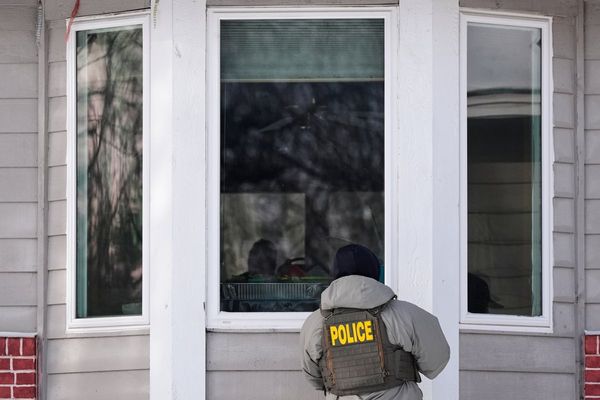
After a rookie season in 1968 when he set a franchise record for touchdown passes for the Denver Broncos that stands to this day, Marlin Briscoe was in for a rude awakening.
That season, Briscoe stood in relief for injured starter Steve Tensi, and in 11 games and five starts, completed 93 passes in 214 attempts for 1,589 yards, 14 touchdowns and 13 interceptions. The pick total and 41.5% completion rate imply that the Nebraska-Omaha alum had some things to work on at the quarterback position, but Briscoe put up his first-year totals in an American Football League in which Tensi himself completed just 40.3 percent of his passes and threw five touchdowns to eight interceptions, and John Hadl of the San Diego Chargers was the league’s most prolific quarterback with a 47.3% completion rate, 27 touchdowns and 32 interceptions.
It was not the nature of the AFL in 1968 to have quarterbacks with the efficiency that would be required in the modern game—those quarterbacks were throwing it deep more often and playing against defenses that could be far more aggressive.
So, Briscoe’s statistics weren’t out of the ordinary for his league, and certainly for his experience. He had been selected in the 14th round of the 1968 AFL draft as a defensive back and was only allowed to compete as a quarterback—the position he played very well in college—because Al Caniglia, his college coach, told him to ask for an adaptation to his contract.
The first starting QB in pro football to break the color barrier 👏
Remembering @Broncos Marlin Briscoe today on #Juneteenth pic.twitter.com/Su6nQKjX8x
— NFL Films (@NFLFilms) June 19, 2024
“[Caniglia] told me, ‘Listen, Denver is one of the only teams in the [AFL] that practices in the city, where the media and fans can watch,” Briscoe recalled in William C. Rhoden’s Third and a Mile. “See if you can insert a little trial—two or three days—at quarterback in your contract.’ I thought it was a great idea. When [assistant coach] Stan Jones came to negotiate the contract, I said, ‘You know, I’ll sign the contract if Denver gives me a three-day trial. All I want to do is test my skills out for three days.”
Jones agreed that it was a good idea, though head coach Lou Saban and director of player personnel Fred Gehrke disagreed. The schism produced a holdout situation in which Briscoe threatened to go get a teaching job instead of accepting Denver’s $15,000 contract offer. Saban and Gehrke agreed to Briscoe’s terms, and though he generally got half the number of throws the other potential quarterbacks received in training camp, he made enough of an impact for the Denver Post to write an article about him.
After the season, Briscoe returned home to Nebraska to get his degree. His cousin called him from Denver to inform Briscoe that the Broncos had signed a quarterback named Pete Liskie from the Canadian Football league, and, word was, the team was having quarterback meetings without him.
“So, I took a clandestine flight to Denver,” Briscoe remembered. “I stood outside the coach’s office, and out walks Steve Tensi, Lou Saban, quarterbacks coach Hunter Anderson, Pete Liske, and a couple [other] quarterbacks. They couldn’t even look at me. If I didn’t think it was wrong for a man to cry, I’d have cried. I was that hurt. I just turned and walked out. I knew I wasn’t in their plans. It was like I’d never played that first year.”
In Saban’s mind, it appeared to be so.
“Marlin was an exceptional athlete, but he didn’t have great size. He was always throwing out of a well. I figured his best position was receiver, but we were searching for a quarterback. In the four and a half years I was with the Broncos, we never found a guy who could take over the position. We brought in quarterbacks by the dozens. It didn’t make much difference what their backgrounds were, I was going to play whoever could win—because if you don’t win, it’s over.”
Well. The Lou Saban era in Denver lasted from 1967 through 1971, and in that time, 10 different quarterbacks had at least one passing attempt for the team. Among those quarterbacks, Briscoe led the pack in touchdown percentage, passer rating, quarterback rating, and passing yards per game. The Broncos had a 2-3 record in the games he started, but Briscoe was clearly the best quarterback on a series of bad teams.
In a 21-14 win over the Miami Dolphins, Briscoe brought his team back from a 14-0 deficit, running six times for 29 yards and two touchdowns — including the game-winner.
“Marlin gave us some real Black power today,” veteran defensive lineman Dave Costa said after the win.
But nothing Briscoe did was enough for Saban.
“I did what I thought I had to do,” Saban said in Jeff Miller’s Going Long. “He went down to Miami a year later and played receiver and did very well. People said, ‘You were right.’ You’ve got to look out for the product, what’s best for the team.”
Briscoe stayed in the NFL as a receiver through the 1976 season, catching 224 passes for 3,537 yards and 30 touchdowns. He made the Pro Bowl in 1970 with the Bills with 57 receptions for 1,036 yards and eight touchdowns, and he was a part of the Miami Dolphins’ Super Bowl teams in 1972 and 1973, including the only perfect season in NFL history in 1972.
But the denial of opportunity at the quarterback position never left Briscoe—it always haunted him. Don Shula made him the Dolphins’ emergency quarterback in 1972 after Bob Griese was injured and veteran Earl Morrall took over. As Briscoe later said, “If I was good enough to be an emergency quarterback, why weren’t other teams willing to give me a chance?”
Hall of Fame receiver Paul Warfield remembered in Third and a Mile that the Dolphins did have one specific trick play in which Briscoe would be able to throw the ball.
“I was the slot receiver. Marlin lined up one yard off the line. The quarterback would throw him a quick hitch pass—actually, a lateral. I’d run downfield toward one of the two defenders, under control, kind of like a blocker. As soon as they came toward me, I’d release downfield, and Marlin would deliver the football. It put tremendous pressure on the defense, put them in a bind.”

The racial component is the clear and obvious reason for Briscoe’s enforced departure from the quarterback position, and it was quite clear that neither league was ready for a starting Black quarterback in 1968. In Briscoe’s case, there’s also an element of inflexibility about the position that went on at the time that got in his way.
In the late 1960s, a scrambling quarterback was still thought to be a Bad Thing. Hank Stram of the AFL’s Kansas City Chiefs had installed a moving-pocket offense combined with play action for quarterback Len Dawson that was quite effective, but functional mobility wasn’t considered a universal advantage for quarterbacks as it is today.
And while Briscoe was able to use his mobility to overcome his height disadvantage by creating throwing lanes on the run, he was a couple of generations ahead of his time with that idea—it’s obviously a common practice nowadays for quarterbacks, and if Briscoe came along in 2018 instead of 1968, his story would likely be radically different. He was a pioneer, and like a great many pioneers in any field, he found the terrain inhospitable and adaptation difficult as the forces arrayed against him were more powerful and entrenched that he was.
Briscoe became a mentor to some of the Black quarterbacks who followed in his wake, rooming with Shack Harris in Buffalo and talking with Joe Gilliam after Gilliam’s brief starting stint with the Pittsburgh Steelers in 1974. All we can do is wonder how he would have fared given the opportunities he deserved.







